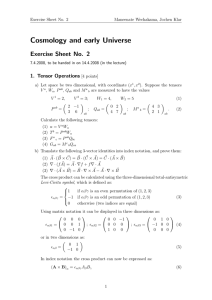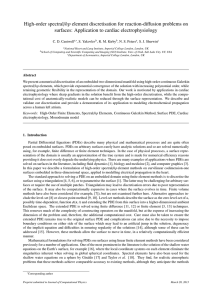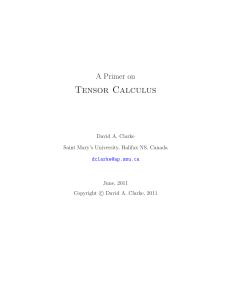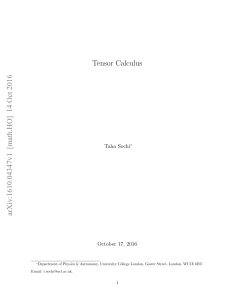ON THE NATURE OF THE CAUCHY STRESS TENSOR Cauchy stress tensor
advertisement
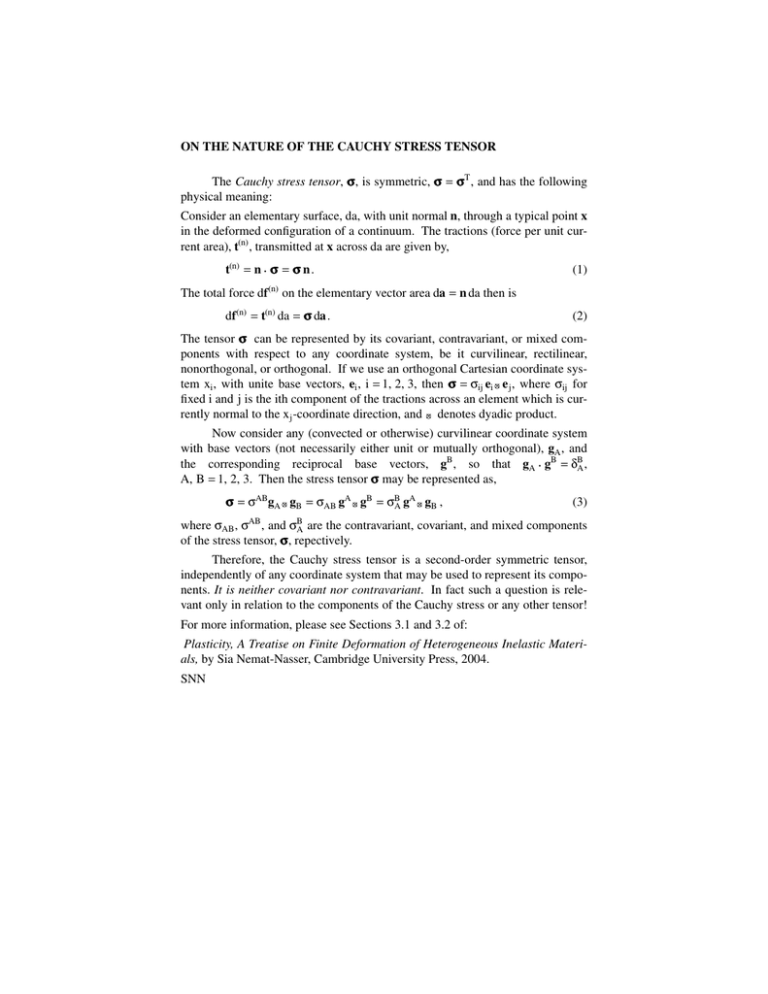
ON THE NATURE OF THE CAUCHY STRESS TENSOR The Cauchy stress tensor, σ , is symmetric, σ = σ T , and has the following physical meaning: Consider an elementary surface, da, with unit normal n, through a typical point x in the deformed configuration of a continuum. The tractions (force per unit current area), t(n) , transmitted at x across da are given by, t(n) = n • σ = σ n. (1) The total force dff(n) on the elementary vector area da = n da then is dff(n) = t(n) da = σ da. (2) The tensor σ can be represented by its covariant, contravariant, or mixed components with respect to any coordinate system, be it curvilinear, rectilinear, nonorthogonal, or orthogonal. If we use an orthogonal Cartesian coordinate system xi , with unite base vectors, ei , i = 1, 2, 3, then σ = σij ei × e j , where σij for fixed i and j is the ith component of the tractions across an element which is currently normal to the x j -coordinate direction, and × denotes dyadic product. Now consider any (convected or otherwise) curvilinear coordinate system with base vectors (not necessarily either unit or mutually orthogonal), gA , and the corresponding reciprocal base vectors, gB , so that gA • gB = δBA , A, B = 1, 2, 3. Then the stress tensor σ may be represented as, σ = σABgA × gB = σAB gA × gB = σBA gA × gB , (3) where σAB , σAB , and σBA are the contravariant, covariant, and mixed components of the stress tensor, σ , repectively. Therefore, the Cauchy stress tensor is a second-order symmetric tensor, independently of any coordinate system that may be used to represent its components. It is neither covariant nor contravariant. In fact such a question is relevant only in relation to the components of the Cauchy stress or any other tensor! For more information, please see Sections 3.1 and 3.2 of: Plasticity, A Treatise on Finite Deformation of Heterogeneous Inelastic Materials, by Sia Nemat-Nasser, Cambridge University Press, 2004. SNN





